

Swisswatches 24 Days of Christmas: Top Watches of 2024
It’s been another extraordinary year for us all, and the watch world is no exception. That’s why the Swisswatches team sat down once more to compile a list of our top watches from 2024. From milestone models and innovative materials to historic revivals, we present you with 24 special highlights to emerge from the ever-surprising Swiss watch industry in 2024. Here’s to yet another year of innovation and beauty in watchmaking – and a very Merry Christmas from all of us at Swisswatches.
Laurent Ferrier Classic Moon Annual Calendar
We are big fans of Laurent Ferrier’s watches, especially his calendar models. This year, for the first time in 15 years, the watchmaker presented the Classic Moon Annual Calendar, an annual calendar with a moonphase – and for us, one of the most beautiful moonphase models ever! So elegant, so neo-classical, and so neatly executed.

The Classic Moon is available in two versions: stainless steel or in 18-carat red gold, in Ferrier’s typical Classic case with a diameter of 40 mm. The gold version is our personal favourite, as the colour combination of the silver-coloured dial with the warm gold tone of the case, the blue railway minute track and the red hand for the date display is particularly aesthetically pleasing. The moonphase sparkles beautifully on a beautiful aventurine glass with translucent enamel.


Patek Philippe Golden Ellipse Reference 5738/1R-001
Patek Philippe presented a novelty for the Golden Ellipse Reference 5738 in rose gold this year with a polished, hand-finished metal bracelet for this model. In homage to the 1970s, the fine rose-gold bracelet has more than 300 links and an engraved clasp. Together with the 34.5 × 39.5 mm large and 5.9 mm thin case, it creates an elegant and timeless aesthetic.

This is emphasised by the ebony-coloured 18-carat gold dial with sunray finish and applied baton hour markers and slim rose gold hands. In addition, the well-proportioned case, which is based on the golden ratio, houses the ultra-thin mechanical calibre 240.
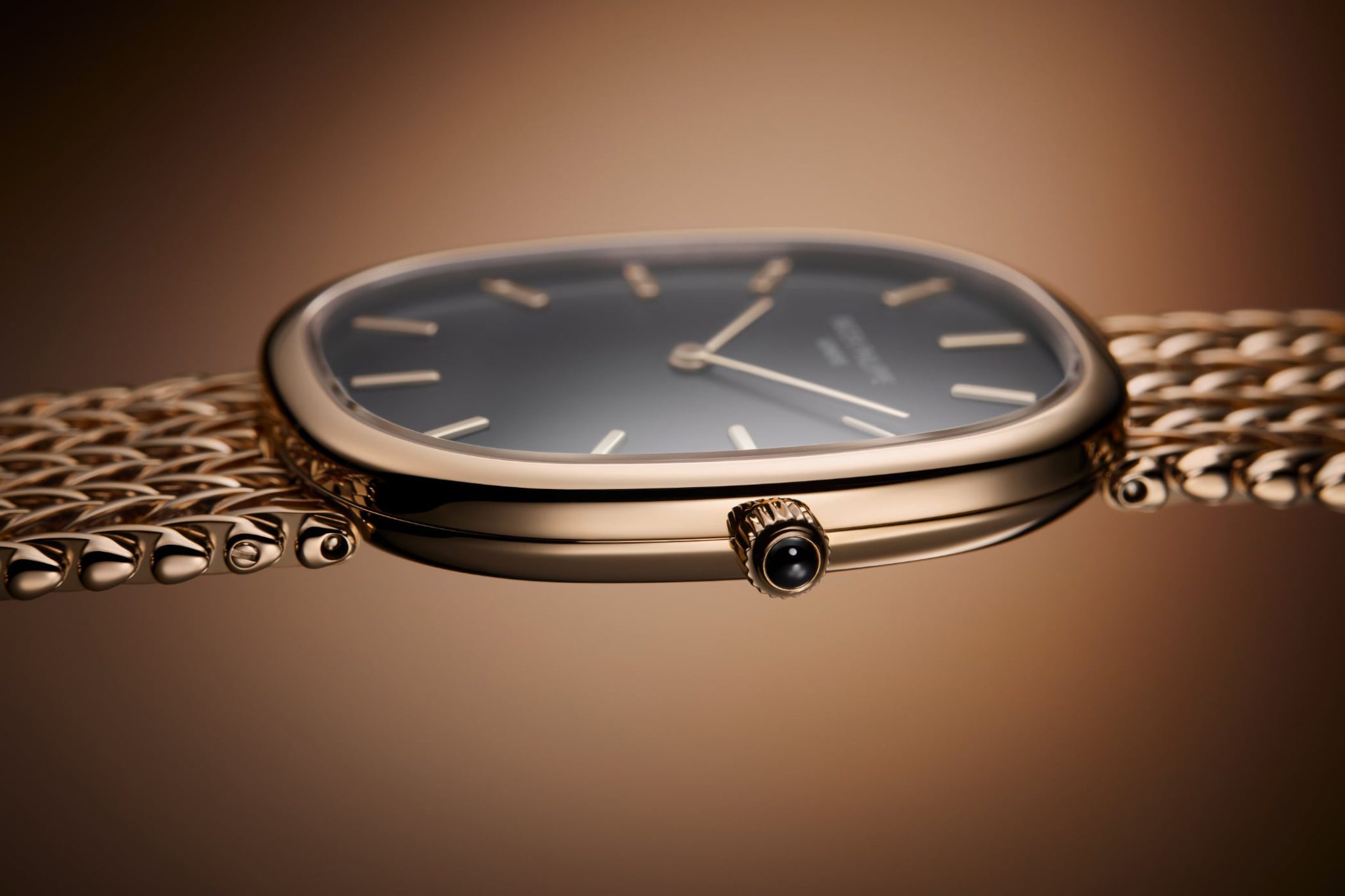
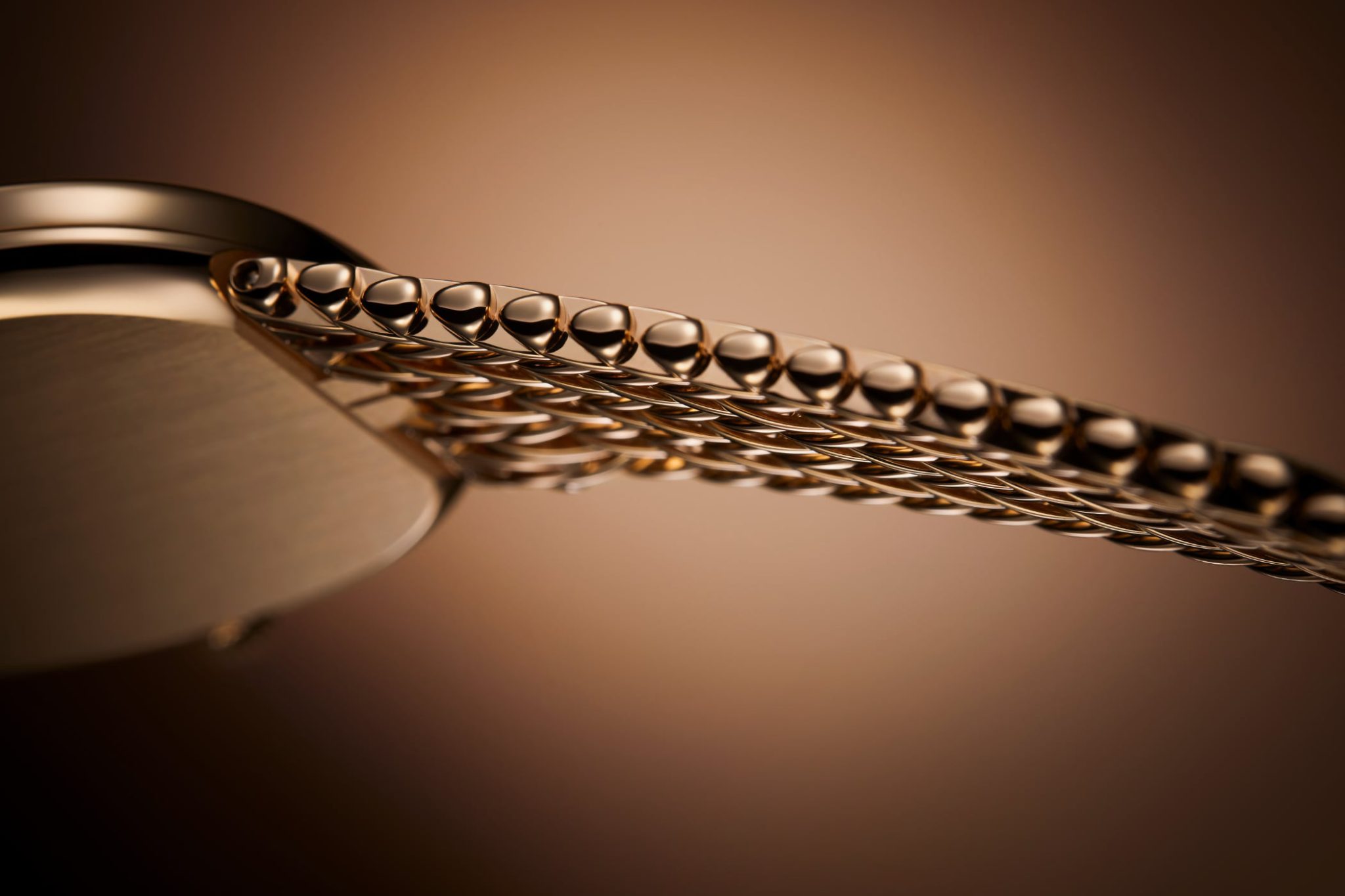
Piaget Polo 79
This watch simply cannot be missing from this list: it is too historically relevant, whether you like it or not. Piaget has reissued a number of important references to mark the 150th anniversary of the maison this year. This includes the Piaget Polo 79, which is inspired by the original model from 1979. At the time, it was Piaget’s first sports model, which Yves Piaget unveiled to great fanfare by having his own polo team ride their horses down Fifth Avenue in Manhattan.

The Polo had changed a lot visually over the years – and with the Piaget Polo 79, the company has now returned to its roots, with eye-catching gadroons on the bracelet, case and dial and, of course, in full gold, just like the watch of yore. The movement is of course completely new; instead of quartz, the in-house calibre 1200P is now used.


Cartier Tortue Monopoussoir Chronograph
Each year, Cartier captures the hearts of its most fervent followers with the introduction of a new series of Privé watches– and one could argue that this is one of the most handsome yet. This classic is a flawless reinterpretation of the Cartier Privé Tortue watch, of which an original was created in 1912. As a historic model of the brand, the Tortue (French for tortoise) is one of Cartier’s hallmark designs. While this novelty marks a modern-day debut, the single-button chronograph is something aficionados may recognise, with Cartier having originally introduced it into a Tortue model back in 1928. Cartier reinterpreted it once more in 1998 with the sophisticated details we see today: blued-steel apple-shaped hands, a hollowed-out central seconds hand, and triangular motifs on the four corners of the dial. It is from this rather handsome model that Cartier takes its inspiration today.

Powering the timepiece is the manual-winding 1928 MC, which is visible via the open caseback, revealing the spectacle of gears at work. The calibre’s column wheel makes for a particularly important component as it regulates the functions of the various levers. In addition, the movement is 4.3 mm thick, making it the thinnest chronograph in the maison’s portfolio.


Rémy Cools Tourbillon Atelier
Cool by name, cool by nature – Remy Cools’ name swept across the independent watchmaking scene with the introduction of his attractive second series ‘Tourbillon Atelier’ watch in platinum. Earlier this year, the timepiece was awarded the ‘Horological Revelation Prize’ for the Grand Prix d’Horlogerie de Genève. Featuring a brand-new calibre and reflecting Cools’ passion for 18th and 19th century horology, its design blends with his modern vision of watchmaking. While a silver subdial and round convex hands display the time on the upper half of the textured dial, the lower half makes way for a tourbillon, featuring a carriage entirely finished by hand.

Indeed, the atelier’s watches are meticulously crafted from start to finish, handling nearly every step – from the hand-formed Breguet hairspring, bridges and mainplates to decoration, finishing touches, gear cutting, wheel cutting, balance spring and gilding – by hand. The small but incredibly impressive atelier produces a mere 12 watches per year.
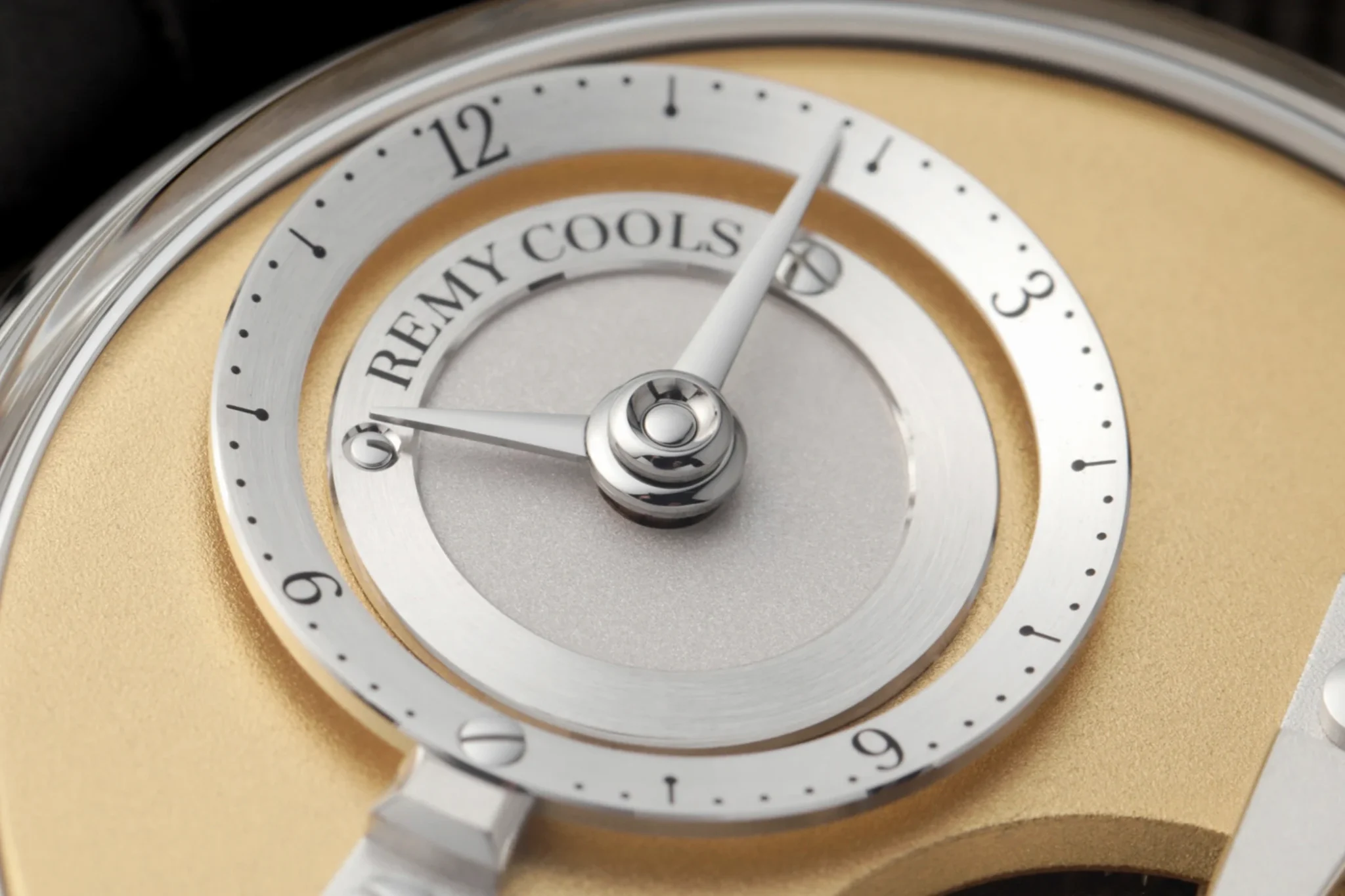

A. Lange & Söhne Datograph Handwerkskunst
The highly limited Handwerkskunst editions from A. Lange & Söhne are the most exquisite pieces that the watch manufacture has to offer in terms of dial and movement decorations. Since the company was founded in 1994, a mere eight Handwerkskunst editions have been released – the new Datograph Handwerkskunst is the eighth in the series. The fact that a Datograph was chosen is no coincidence, but is in fact due to its 25th anniversary, which it is celebrating this year.

A rare and elaborate tremblage engraving can be seen on its dial, whereby tiny amounts of material are removed extremely carefully with a trembling movement using the tip of a thread burin, creating a fine-grained surface. In this special edition, even the edges of the appliqués, the hands and the Roman numerals have been bevelled and given a line finish. The movement was also decorated with even more attention to detail than is already customary at Lange. The watchmaker only produced 25 pieces.


Tudor Pelagos FXD GMT ‘Zulu Time’
Tudor’s Pelagos FXD series has also grown this year. Developed in collaboration with the French Navy, the GMT ‘Zulu Time’ offers the possibility of reading up to three time zones thanks to the orange-coloured 24-hour hand, the bidirectional rotating titanium bezel and the hour hand known as the ‘Snowflake’ hand. The aesthetic combination of beige-coloured elements with the matt black dial and bezel made the watch a crowd favourite among Tudor connoisseurs this year. The case of the Tudor Pelagos FXD GMT ‘Zulu Time’ is made of grade 2 satin-finished titanium and measures 42 mm in diameter, while the height is 12.7 mm. The only drawback we noticed when wearing it? The green textile strap, which blends seamlessly into the military look of the GMT ‘Zulu Time’, but leaves room for improvement in its finishing to better harmonise with the robust character of the watch.

And what exactly is behind the term ‘Zulu time’? Zulu Time is another name for Coordinated Universal Time (UTC), which in turn is based on the concept of Greenwich Mean Time (GMT) and was created to facilitate the complex coordination of military and international operations across different time zones. So if an event is scheduled at 10:00Z (Zulu time), this means that it takes place in Germany at 11:00 (CET, UTC+1), in the United Arab Emirates at 14:00 (UTC+4) and in New York at 05:00 (UTC-5).

Universal Genève Polerouter
This year, Universal Genève celebrated the 70th anniversary of the first SAS (Scandinavian Airlines System) transpolar flight in 1954 by launching three new Polerouter one-off pieces, one of which will be auctioned by Phillips next year. All watches feature a 35 mm case, each made from a different material: 18-carat white gold, 18-carat red gold and stainless steel. The case is complemented by a domed sapphire crystal with anti-reflective coating on both sides, a screw-down case back and a crown with two seals. Depending on the model, the iconic twisted lugs lead into a handmade Milanese strap (Ref. JU6910), black calfskin strap with a red gold (RU6910) or steel pin buckle (AU6910).

Although the design of the dial differs from model to model in terms of the choice of materials and colours, they all feature the new Universal Genève logo and the modern and historical SAS logos on the silk-matt surface. On the white gold model, this is blue. On the black dial of the red gold edition and the silver dial of the steel model, on the other hand, red gold-plated hands and indices indicate the hours, minutes and seconds. Behind each of the dials is the original Microtor calibre 1-69 from the 1960s with a micro-rotor, which is relatively flat with a height of 4.75 mm and has a power reserve of 57 hours. With this historic tribute, Universal Genève has presented a significant milestone ahead of the planned brand revival in 2026.


Louis Vuitton Escale Time-Only
After Louis Vuitton revived the Tambour in recent years, 2024 marked the year for a relaunch of the Escale, Louis Vuitton’s travel watch with its eye-catching dial design and second time zone. But the new Escale Time-Only models have evolved into strikingly beautiful dress watches, a tribute to the Louis Vuitton luggage we all know. The gold indices at 12, 3, 6 and 9 o’clock and parts of the minute track are inspired by the metal parts and rivets of the suitcases.

We particularly like this blue version, with its grained dial in the centre, satin-finished case sides and hand-polished and hand-brushed lugs with decorative rivets. The Escale Time-Only is powered by the automatic calibre LFT023, developed by Louis Vuitton’s watch manufacturer La Fabrique du Temps in collaboration with Le Cercle des Horlogers.

Berneron Mirage Tiger Eye 34 mm
The next watch on our list showcases an asymmetrical, fused aesthetic that defies convention, extending its unconventional design from the case and hands to the movement itself, which adopts a distorted structure reminiscent of Salvador Dalí’s iconic painting The Persistence of Memory. Stripped of markings and numerals, the Mirage Tiger Eye 34 mm continues the minimalist legacy established by the brand’s first timepiece, the Mirage 38 mm. The natural stone dial, crafted from tiger’s eye and measuring just 1.3 mm thick, features a hand-chiselled sub-dial counter. Due to the complexity of its production, this intricate component has an exceptionally high failure rate of 80 percent during manufacturing. This means that four out of five dials have to be discarded.

In keeping with the brand’s philosophy of ‘one watch – one movement’, a glance at the watch and the new calibre 215 impressively demonstrates how consistently the brand pursues this principle. The calibre has the same asymmetrical shape that characterises the case. However, its form is not just for aesthetic purposes, but also enables the movement to increase its power reserve from 38 to 72 hours by increasing the base area by 15 percent compared to a conventional round movement. This is achieved by combining a large barrel with the smallest balance currently available on the market, according to Berneron.


Parmigiani Toric Chronograph Rattrapante
Limited to only 30 pieces, this extraordinary timepiece seamlessly marries a revered complication with Parmigiani Fleurier’s timeless design language, resulting in a dress watch of unparalleled elegance. At its heart lies a sophisticated rattrapante mechanism – commonly known as a split-seconds chronograph – paired with a 30-minute counter at 3 o’clock, a 12-hour counter at 9 o’clock, and running seconds at 6 o’clock. The dial, crafted in hand-grained rose gold and adorned in a rich ‘natural umber’ hue, exudes warmth and depth, while also featuring harmoniously integrated 18-carat rose gold indices and hands, perfectly matched to the case and its signature knurled bezel.

Driving the Toric Chronograph Rattrapante Rose Gold Natural Umber is Parmigiani Fleurier’s exceptional in-house calibre PF361. Viewed through the sapphire caseback, this high-frequency (5Hz) movement glows in 18-carat rose gold, incorporating a double column wheel for the rattrapante mechanism. Meticulously finished, it showcases open-worked bridges with satin finishes and hand-bevelled edges. Each piece is individually numbered, as is discreetly engraved on the caseback. Completing the watch’s distinguished aesthetic is a hand-stitched nubuck alligator strap in a soft sand-gold tone; so soft is the material and so attractive the material, the strap is a real highlight, too.
Greubel Forsey Nano Foudroyante EWT
For 20 years, the Swiss watch manufacture Greubel Forsey has been characterised by its inventiveness and its technical redesign of timepieces. To mark its anniversary this year, the brand presented the Nano Foudroyante EWT 5144, a technically exceptional timepiece that is limited to 11 pieces. The 37.9 mm case made of white gold and shimmering blue tantalum houses the brand’s tenth invention: the first perpetual Nano Foudroyante. This is integrated in the first flying tourbillon with an orientated reading axis and a manual winding with flyback function by Greubel Forsey.

With the Nano Foudroyante, Greubel Forsey has rethought the concept of the traditional Foudroyante: the energy consumption of this energy-intensive complication has been reduced by a factor of 1,800 to energy management in the nanojoule range. In addition, its volume has been reduced by 90 percent, which also allows the movement to have a diameter of 31mm in Greubel Forsey’s smallest case to date. The aesthetics of the timepiece are monochrome, with only red markings providing small accents on the dial. At 8 and 9 o’clock are the small seconds and the chronograph minute counter in gold. The flying tourbillon can be seen at 6 o’clock, on which the dial of the Nano Foudroyante always remains aligned at 12 o’clock despite the rotations. In addition, the open caseback offers a further view of the movement, which features polished relief engravings and a column wheel with a rare 3D monobloc geometry.


Kudoke 3 Salmon
Independent watchmakers are becoming increasingly important in the world of watchmaking: the special appeal of their creations lies in the fact that freelance watchmakers are not subject to the rigid guidelines of a parent company and can completely determine the design, time and craftsmanship that goes into their pieces. Stefan Kudoke is one of the watchmakers for whom this concept of passion and craftsmanship becomes a sensational experience across two collections – the Handwerk and Kunstwerk series. The watchmaker, who founded his eponymous brand together with his wife Ev Kudoke in 2004, was the first independent German watchmaker ever to win the prestigious Grand Prix pated’Horlogerie de Genève (GPHG) in the ‘Petite Aiguille’ category in November 2019. He prevailed against industry giants such as Zenith, IWC and Maurice Lacroix. This year, he achieved the feat again: with the Kudoke 3 Salmon, he once again won the ‘Petite Aiguille’ category.
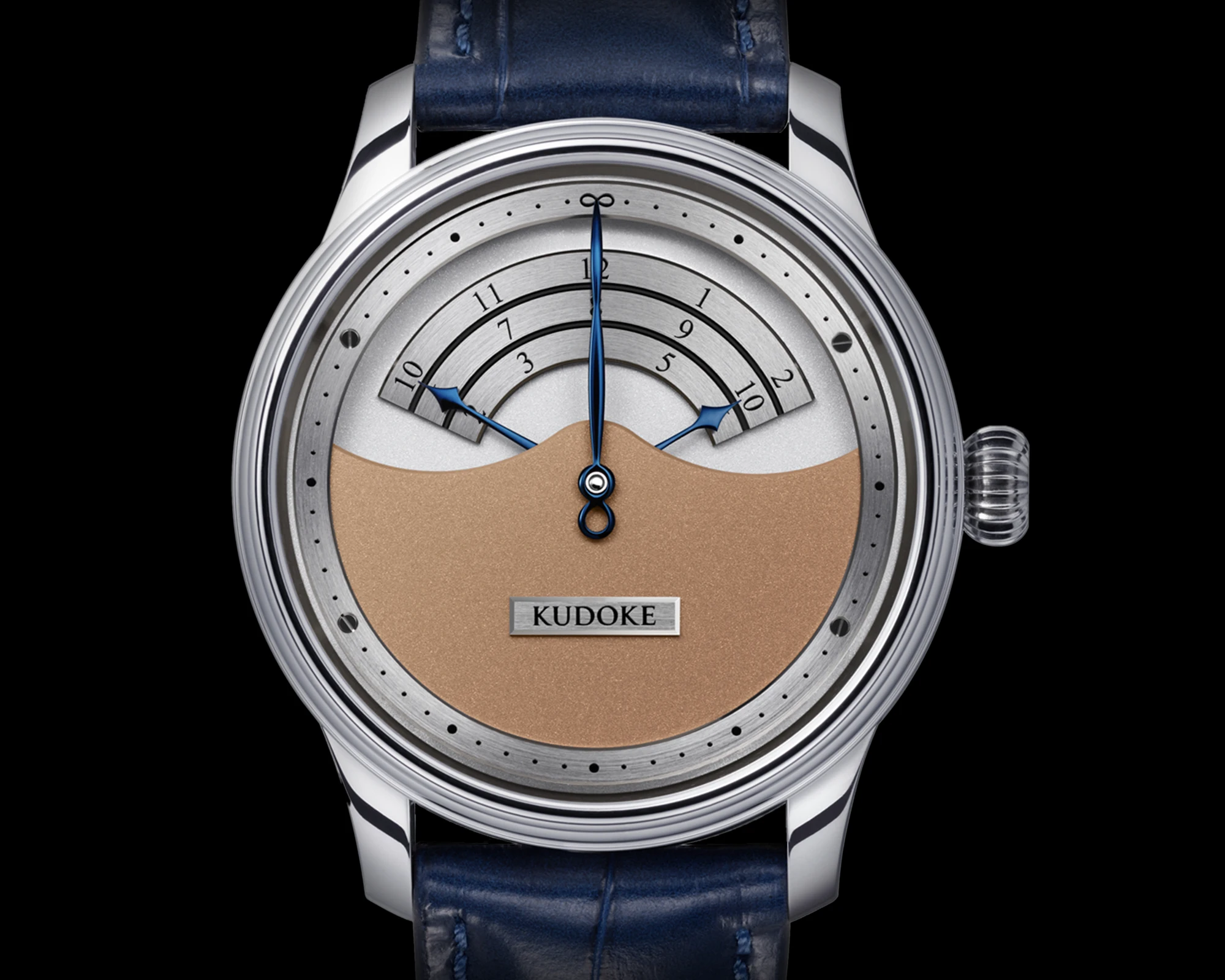
As a watch that has made a particular impression on horology fans this year, the Kudoke 3 Salmon definitely deserves a closer look. While Kudoke takes a traditional approach to the minute display, represented by a large, blued steel hand pointing to the outer dial ring, it is the hour display that makes this watch exceptional. The hour hand has three arms of different lengths that run below a plate mounted on the dial and point to three separate hour scales. The special feature of this design is that as soon as one arm has run through its hour scale, the next longer or shorter arm begins and continues the display.

Inside the Kudoke 3 Salmon ticks the calibre 1, which showcases Glashütte stripes finishing and an impressive wheel bridge design – the latter is based on the aesthetics of historical English pocket watches and bears an engraved infinity symbol in its centre. This symbol, which is to be understood as Kudoke’s signature, can also be found on the dial side of the watch.
IWC Portugieser Eternal Calendar
IWC presented a real world first this year. With the Portugieser Eternal Calendar, no corrections need to be made until the year 3999. With an ordinary perpetual calendar, an irregularity in the Gregorian calendar means that the adjustment has to be made manually in the year 2100, which is not a leap year outside the norm.

The moonphase is also a true long-distance runner and will not need to be corrected for the next 45 million years. Well, it remains to be seen what will happen to humanity by then – but the point here is to show that watchmakers never stand still, and continue to push the boundaries of what is technically possible. Incidentally, Kurt Klaus also celebrated his 90th birthday this year. It was he who revolutionised the perpetual calendar mechanism at IWC in the 1980s.


MB&F LM Sequential Chronograph Flyback Platinum
Two years after MB&F introduced its first chronograph, the award-winning LM Sequential EVO, the brand launched the model with a technical upgrade this year. The LM Sequential Chronograph Flyback Platinum is characterised by the combination of different timekeeping modes. Thanks to the binary ‘Twinverter’ switch, it is possible to measure fractions of a second or individual times. New to this edition, however, is the addition of a flyback chronograph, which adds an aviation function to the existing motorsport functions.

This innovative combination is encased in a 44 mm platinum case with a water resistance of 30 metres. Designed by Stephen McDonnell, the movement with two independent chronographs is accentuated by the openworked dial and the open case back. The hand-wound calibre has two barrels and a generous power reserve of 72 hours.

A sky-blue base plate alludes to aviation and provides an elegant background for the various circular and ring-shaped time displays. The off-centre dial with an hour and minute display is located at 6 o’clock, while the displays for the respective chronographs are arranged on the left and right side of the timepiece. Matching push-buttons for the chronographs are located on the left and right-hand sides of the case. A pusher at 9 o’clock can be used to switch between the two chronographs by pressing the ‘Twinverter’ switch. Despite all the technology contained in this single timepiece, the Legacy Machine does not appear overloaded and its overall appearance is harmonious and elegant.
Piaget Andy Warhol Clou de Paris
With the Andy Warhol Clou de Paris, Piaget is once again merging art and watchmaking. This is a revival of the ‘Black Tie’ from 1972, which was reissued in 2014 and given a new name this year in collaboration with the Andy Warhol Foundation for the Visual Arts. The timepiece carries on the legacy of the iconic artist and Piaget Society member from the 20th century.

The watch is particularly characterised by the typical Piaget horseshoe nail pattern, Clou de Paris, on the box-shaped case. The white-gold case measures 45 mm in diameter and is water-resistant to 3 ATM. It features a deep blue metoerite dial, complemented by dauphine-style hands and elegant indices. Inside the watch ticks the richly decorated, in-house automatic calibre 501P1 with a power reserve of 40 hours.

A blue alligator leather strap with an ardillon clasp rounds off the overall look of this vintage-style watch. In addition to this edition, Piaget’s ‘Made to Order’ personalisation service makes it possible to create your own variation of the Andy Warhol Clou de Paris. The case is not only available in white gold, but also in rose gold. Customers can choose between different gemstone dials, hands and leather straps to create a personalised version of the timepiece.
F.P.Journe Tokyo Series
The F.P.Journe Tokyo Series Ref. FB embodies something of a poignant moment for F.P.Journe, as the final limited edition to ever be produced by the brand. The limited Tokyo Boutique Anniversaire Series had been running for just shy of two decades, and this 20th anniversary edition in titanium truly marks the end of an era. Each year, François-Paul Journe creates a new movement – and this model is the felicitous recipient of his latest creation, the calibre 1518.2.

Offering a manual-winding single chronograph with flyback mechanism and large date, the resplendently glowing 18-carat rose-gold calibre is the first of its kind at F.P Journe; this is, astonishingly, the brand’s only manually-wound single chronograph in its portfolio. Displaying hours, minutes, seconds, as well as the flyback chronograph’s 60-second and 60-minute subdial counters, the dial is, as always, an utter work of art comprising ruthenium-coated guilloché silver, counters in sapphire, and 5N gilt, red lacquered and ivory steel hands.

Furthermore, the dial plays host to an additional quirk: instead of completing a full revolution in the usual one minute, the chronograph hand takes two minutes to do so, which requires a 60-second subdial for accurate measurement. As a result, the tachymeter scale is calibrated to measure distance based on 1,000 meters, with the scale ranging from 300 down to 30. The watch is (alas) limited to only 200 pieces.
Vacheron Constantin Overseas Olive Green
Vacheron Constantin seems to top its own successes year on year, and 2024 was no different. Alongside stunningly creative unique pieces from its Les Cabinotiers department, the brand also introduced something of the perfect crowd-pleaser: Overseas watches with olive green dials. Already a favourite in steel with a blue dial and available in a further four colours, earlier this year, the sports watch smartly shifted across to the green dial trend, this time in combination with a pink-gold case – and it couldn’t have been executed better.

Thanks to Patek’s Nautilus (not to mention its recent doings), ‘Olive green’ is something of a magic word amongst watch enthusiasts these days. According to Vacheron’s Style and Heritage Director, Christian Selmoni, ‘it could well be that this new colour will become as iconic as blue within the collection’. The new olive-green dial colour, he explains, ‘acts as a revealer, enhancing the brilliance of the gold while ensuring exceptional legibility of the watch’s functions.’ Against a translucent lacquered backdrop to add depth, the centre of each respective dial showcases sunburst satin-brushing and a velvet-finished flange.
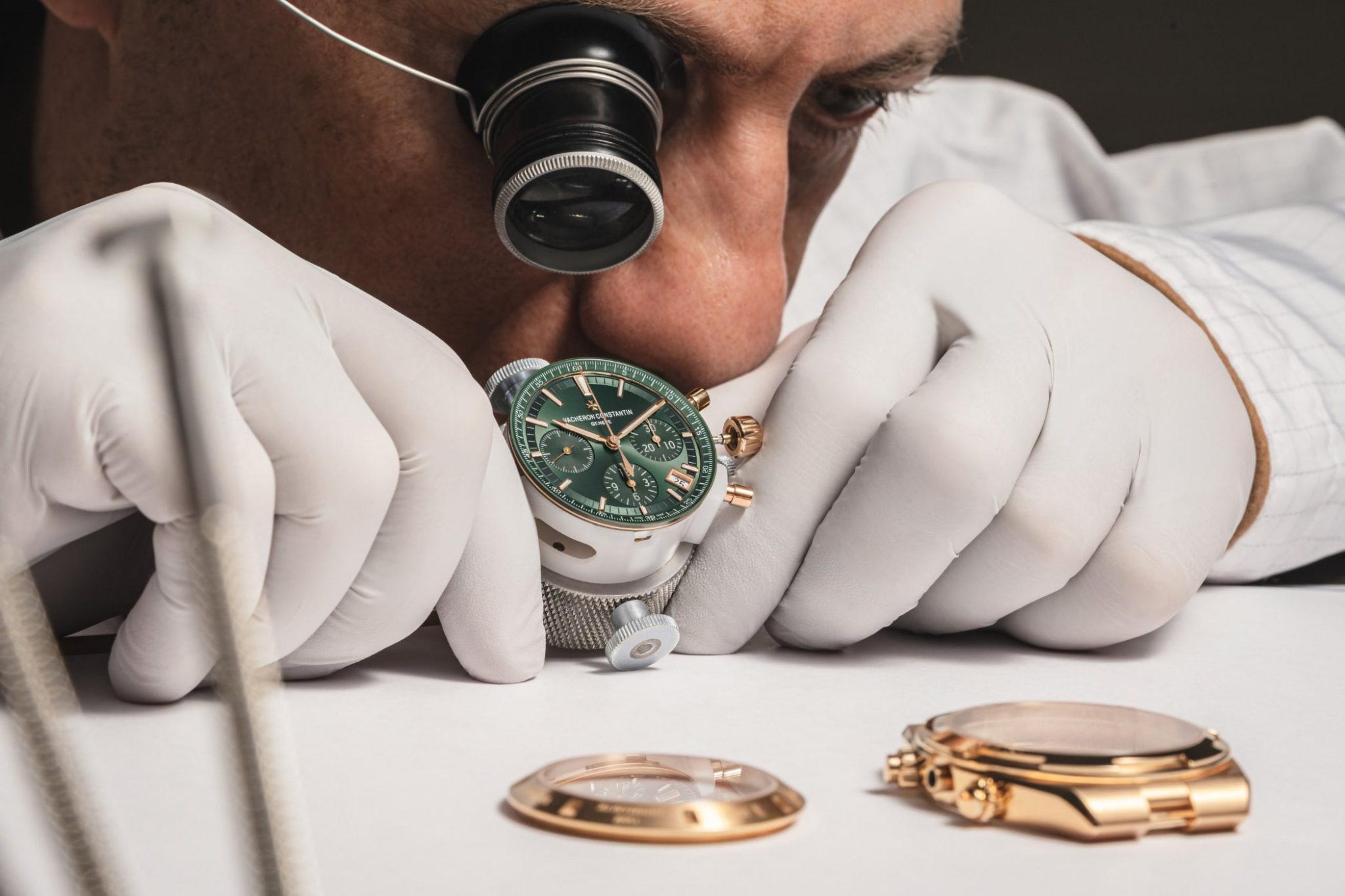
In order to maximise legibility, Vacheron contrast the gold hour-markers and hands, which use Super-LumiNova, with the darker dial colour. Featuring a lighter-shaded double minutes track (or a single one on the gem-set model) the wearer can quickly and accurately read the minutes and seconds. The new green timepieces come in several forms, including a chronograph, dual time, and date available in two sizes, with the latter including the diamond-clad bezel option.
Daniel Roth Tourbillon Rose Gold
Aficionados will know that watch brand Daniel Roth already launched a handsome yellow-gold edition of the Tourbillon Souscription in 2023 – but somehow, the latest iteration in rose-gold still stole the show at Geneva Watch Days this summer. Back then, we made the point that this latest watch embodies quiet luxury from head to toe (or rather case to calibre) thanks to the unfailingly meticulous level of underlying detail that goes into this watch.

The Tourbillon Rose Gold is a fresh take on an old classic, drawing inspiration from the original Tourbillon C187 designed by Daniel Roth himself. The timepiece thus features a guillochage en ligne dial, aka a pattern of parallel, vertical lines that hark back to the original C187: a revered tourbillon model created by master watchmaker Daniel Roth himself. While the earliest C187 models featured a hobnail guilloche finish (as seen in the 2023 Tourbillon Souscription), the guillochage en ligne adds a quietly contemporary-looking touch to this otherwise classic watch.

Powering the timepiece is the calibre DR001, crafted meticulously at Daniel Roth’s home of La Fabrique du Temps. Michel Navas and Enrico Barbasini, the masterminds behind it, aimed to create a movement that would honour the legacy of Daniel Roth while elevating it to new heights.
Richard Mille RM 65-01 McLaren W1
On 7 October 2024, Richard Mille presented a watch for the fourth time, which was developed as part of the ten-year partnership with McLaren. This year’s creation is not only inspired by the latest McLaren super sports car, the ‘W1’, which was presented on the occasion of the 50th anniversary of McLaren’s first Formula 1 world championship title, but is also inspired by the RM 65-01 chronograph from 2020, Richard Mille’s most complex chronograph at the time. The 43.84 x 49.94 x 16.19 mm case of the Richard Mille 65-01 McLaren W1, as was the case with previous McLaren watches, visualises the most obvious elements of the car: this time it is the bird’s eye view of the W1.

At the centre of this is the bezel, which takes up the design of the W1 – in particular the ‘Aero-Cell’ architecture, which is accompanied by pronounced side air intakes and aerodynamic add-on parts. The dial, which is based on the RM 65-01 from 2020, was further developed by the brand into a new skeletonised titanium dial that picks up on the spokes of a McLaren rim pattern and colour accents that are characteristic of the sports car manufacturer. With elements that link the two brands, the fourth McLaren watch, the Richard Mille 65-01 McLaren W1, epitomises the best of both worlds.


Royal Oak Perpetual Calendar ‘John Mayer’ Ref. 26574BC.OO.1220BC.02
In the watch scene, seven-time Grammy award-winner John Mayer is known less for his music than for his extensive watch collection, which, according to media reports, comprises more than a hundred timepieces and exceeds the 10 million mark.

Mayer, who has a penchant for acquiring the finest timepieces from prestigious watchmakers, and Audemars Piguet, in turn, collaborating with the creatives of our time, launched the result of their collaboration this year: the Royal Oak Perpetual Calendar ‘John Mayer’ Ref. 26574BC.OO.1220BC.02. This watch simultaneously embodies John Mayer’s reinterpretation and marks the end of a period for Audemars Piguet. The brand authorised him to add components to the dial that would make it appear in a full blue tone. John Mayer thus opted for a baby blue week hand, dispensed with the red ‘31’ on the date dial and, so that the wearer can still recognise the difference between the ‘31’ and the ‘1’, the ‘1’ is subscript.


But there is another unmissable detail of the watch that makes collectors’ hearts beat faster: the dial presents an unprecedented texture called ‘Crystal Sky’. This is a modification of the ‘Tuscan’ dial, an extremely rare, hand-hammered dial with a rough and irregular surface that was only used in Royal Oak perpetual calendars and a series of classic perpetual calendars, particularly in the 1990s. Audemars Piguet also chose the collaboration as the watch in which the historic automatic calibre 5134 will be used for the last time. This movement’s origins lie in 1978, having been conceived during the quartz crisis. In 1984, the calibre powered the first Royal Oak perpetual calendar (model 5554).
Panerai Submersible ELUX LAB-ID
The First World War led to the proliferation of wristwatches for men – and also of lume, a special glow-in-the-dark paint allowing soldiers to see their watch dials in the trenches at night. It was made of zinc sulphide and radium. As film buffs will know from the movie ‘Radium Girls’, the substance was eventually ceased its production due to its catastrophic health effects – but the legacy of lume lives on, from Super-LumiNova to Rolex’s blue Chromalight, principally in sports and tool watches such as divers. This brings us to Panerai’s Submersible ELUX watch, which is a limited edition of 150 pieces, available in 50-segment releases over three years.

This mammoth 49 mm watch has a Blue Ti-Ceramitech case, offering water resistance to an equally whopping 500 m. But that’s the not most exciting part of this quadruple-patented watch: that honour goes to the P.9010/EL calibre movement inside, integrating has six barrels that not only offer three days of power reserve but also 30 minutes of mechanical microgenerator-powered light to the indices on the dial (and bezel triangle) – no batteries, no electronics, just custom coils, magnets, and old-school mechanics.

This modern wizardry nods to Panerai’s 1966 invention of Elux, a shock-resistant electroluminescent material that lit up Italian Navy ships. ‘Laboratorio di Idee’ brought that innovation to the wrist, proving that Panerai knows how to keep things bright – even in the darkest depths. And if the Elux runs out, Super-LumiNova X2 and X1 have your back.
Rolex Daytona 100th Anniversary 24H Hours of Le Mans in Yellow Gold
At this year’s presentation of new Rolex models, we were astonished when it was announced that the Daytona Le Mans in white gold would be discontinued after just one year. It was launched in 2023 to mark the 100th anniversary of the 24 Hours of Le Mans, however, so the move is somewhat understandable.

Nevertheless, nobody expected it. Instead, this very anniversary model in yellow gold suddenly popped up at the presentation, attracting everyone’s attention. We pulled out the camera and took a snapshot before it disappeared again. This is because it is an off-catalogue model and only reserved for special customers. The anniversary model in white gold was already a real eye-catcher, but the yellow gold version is a sight to behold.

Voutilainen KV20i Reversed
Among the watches that have particularly excited us this year, it is worth turning our attention away from the big brands and towards the independent watchmakers who are becoming increasingly important in the industry. A fact that is illustrated not least by the recent auction result of François-Paul Journe’s first watch to be sold, the F.P.Journe Tourbillon à Remontoir d’Égalité ‘15/93’: With a hammer price of CHF 7.32 million, it became the most expensive watch ever sold by an independent watchmaker. Kari Voutilainen, another big name among independent watchmakers, also proved this: with the KV20i Reversed, a combination of technical sophistication and artistic design, he won the ‘Men’s Watch Prize’ at the Grand Prix d’Horlogerie, the industry’s watch Oscars.

The idea of an ‘inverted’ watch was born from the desire to be able to read the time and admire the technical intricacies of the movement at the same time. To make this possible, Voutilainen simply reversed the movement: the KV20i Reversed presents an in-house movement that shows off its most beautiful elements on the dial side – such as the swinging of the oversized balance wheel, the movements of the escapement wheels and the colour-accentuated jewels. The time is displayed by the typical Voutilainen hands, which circle the hand-decorated nickel silver main plate. However, when the watch is turned over, a blue sub-dial displays the seconds, echoing the blue minute circle on the front.

Cover photo by blndd.Studio











